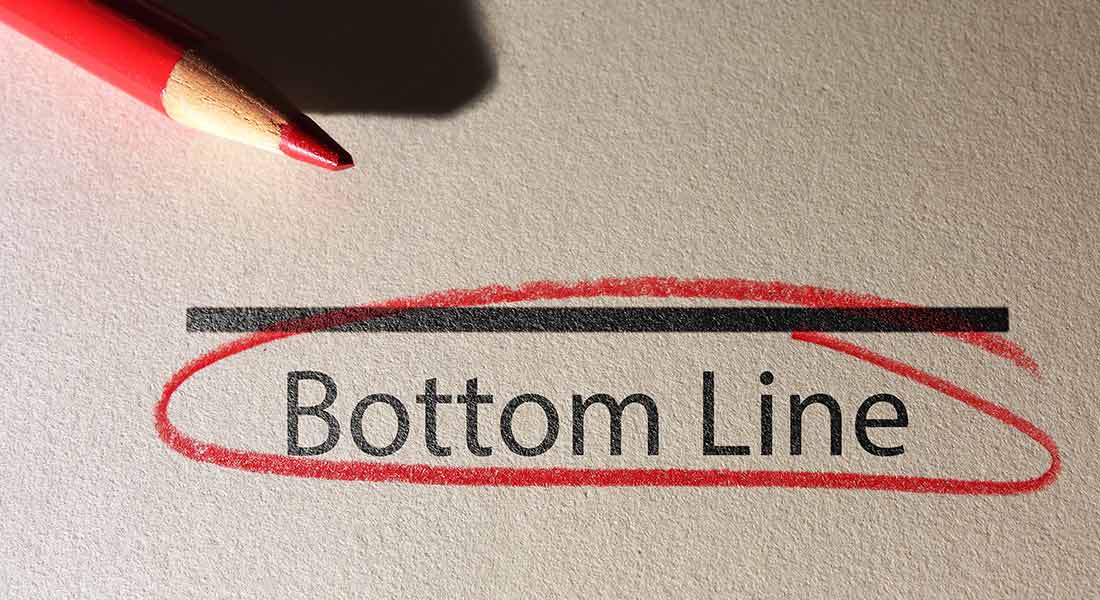Estimated reading time: 4 minutes
Cash is the lifeline of a small business. It is needed to pay office rent, employee salaries, bills, vendors, suppliers, etc. Therefore, staying on top of financial statements is vital to running a stable, prosperous, and profitable small business. Cash flow, invoices, and expenses must be reviewed periodically and managed adequately. Doing so provides a clear picture of a company’s financial situation at any given time, including its bottom line.
The bottom line is one of the essential parts of any business. It is what ultimately determines whether a business succeeds or fails. If you want a better understanding of the bottom line in business, you have come to the right place. This Balboa Capital blog article features all the information you need.
Bottom line definition.
The bottom line is the last line of a business’s financial statement that shows the net profit or loss after all costs have been deducted from revenues. It is also referred to as net income, net earnings, or net profit.
The term comes from an old accounting practice in which accountants would add up all the numbers and put them on one side of a piece of paper, and then they would subtract all the operating costs from their revenues to find out how much money was left over at the end.
Top line definition.
As the name indicates, the top line is above the bottom line on a business’s financial statement. The top line includes the gross sales or total revenue before any deductions (operating costs) are made. For example, if you own a community theater, the total amount of money your theater makes by selling tickets to plays and shows is included on the top line.
Top-line growth occurs when a small business sees increased sales over a specific time frame. For example, using the community theater scenario above, top-line growth would be achieved if the theater sold more tickets and earned more money than it did in the previous time frame. And, if the theater’s expenses did not increase, there may be a boost in profit on the bottom line.
How to calculate the bottom line.
As mentioned earlier in this blog article, the bottom line shows the net profit or loss after all operating costs have been deducted from revenues. A business’s bottom line can be a dollar amount, percentage, or both. Calculating your business’s bottom line is straightforward so long as you maintain accurate and up-to-date financial records, specifically the top-line income statement. It is important to note that some expenses will not be deductible if they are considered personal or non-business related. To get started, subtract your total costs from your gross sales. Here is the formula:
Gross sales – Total Costs = Net Income
Here is an example. Tiffany owns a local pet supply store with $250,000 in sales last year, so $250,000 is the store’s top line. The store’s operating costs totaled $100,000 for employee payroll, rent, inventory, interest on debt, taxes, etc. So, here are the results of the calculation for the store:
$250,000 (Gross Sales) – $100,000 (Total Costs) = $150,000 (Net Income)
How to increase your bottom line
The results of your bottom-line calculation will be either positive or negative. If it is positive, that is good news! This means that your business showed increased net income. Depending on your company’s unique situation and needs, you may be able to put some of the profits back into your business. On the other hand, if your net income is negative or flat, you should look at ways to increase it.
For starters, consider reducing the amount of money you spend on business expenses. Look for vendors and suppliers that charge less for goods, or ask your existing vendors and suppliers for a discount. Next, evaluate your marketing and advertising efforts to see what is generating the highest return on investment (ROI). Finally, reduce or eliminate marketing efforts that are not helping develop new business.
Finally, look at the prices for your products or services to see if they warrant an increase. Just make sure not to increase your prices too high. Keep them fair and on par with the competition, so you don’t lose business.
Conclusion.
The importance of understanding the bottom line cannot be overlooked. You need to know how much money you are making and how much money you are spending to have a successful business. In short, your bottom line tells you how much profit you earned during a period and gives you a good understanding of where your business stands.
The opinions voiced in this material are for general information only and are not intended to provide specific advice or recommendations for any individual.
